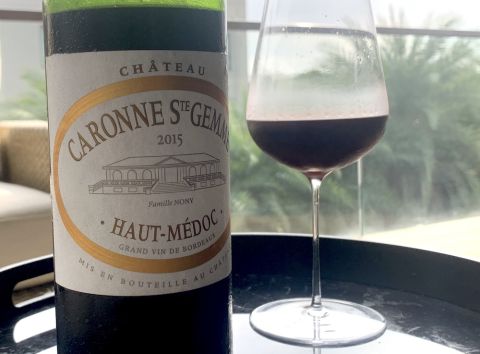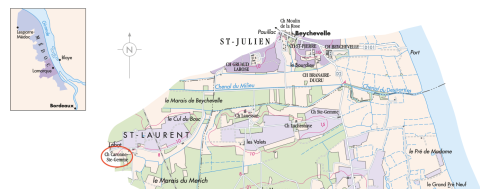A red bordeaux that's consistent in more ways than one. See also this thread on our Members' forum that was inspired by Richard's choice.
From €16.75, $23.50, £20.95, 235 Brazilian reais, SG$80
This wine of the week has been reverse-engineered. Not in its production, I hasten to add, but in its selection. Normally, a WoW does exactly that: it outshines other wines tasted each month, offering particular interest, good value and of course sheer deliciousness – but it must also be widely available. This month, with my first choices foiled by insufficient availability, I had to seek something specific.
I chose the wine that introduced me to classic red bordeaux when I first started in wine retail over 20 years ago: Ch Caronne Ste-Gemme. The 2015 vintage turns out to be available worldwide – including within Singapore, so I could buy a bottle and find out if it fulfilled the other WoW criteria.
In other words, I bought wine like a normal person. And thankfully, the 2015 vintage of Caronne Ste-Gemme is as classic as ever, offering a type of traditional red bordeaux that is usually associated with much higher prices.
That classicism is hardly surprising for a vineyard whose first production dates back 375 years. Yet despite this history, and plenty of critical acclaim, the property has never been ranked alongside the elite of Bordeaux.
Purists might argue this reflects a shortcoming of the terroir, but the gravel soils there sound a lot like those of the Médoc's classified properties, such as nearby Châteaux Gruaud Larose and Branaire-Ducru. However, Caronne Ste-Gemme lies just outside the boundary of the St-Julien appellation, and certainly doesn't have the view of the Gironde supposedly necessary to produce truly great wine, as you can see from this extract from The World Atlas of Wine's map of central Médoc.
However, there is a historical connection to some of the classified châteaux, originating from when Emile and Eugène Borie owned Caronne Ste-Gemme in 1900. The descendants of the latter ended up buying Châteaux Batailley (later split into Batailley and Haut-Batailley) and Ducru-Beaucaillou, while the fourth generation of Emile's descendants still own Caronne Ste-Gemme. In its more recent history, the château has been part of the Crus Bourgeois classification system, although not since their 2008 vintage.
In many ways, Caronne Ste-Gemme is made in the model of a grand cru. On its classic gravel soils, the vineyards comprise 60% Cabernet Sauvignon, 37% Merlot and 3% Petit Verdot, densely planted at 10,000 vines per hectare. Harvest is mostly by hand, fermentation follows a tried-and-tested formula of temperature-controlled stainless-steel and concrete vats for up to three weeks with regular pumping over. Maturation takes place in 225-litre French oak barriques, of which 20–25% are new.
Like all bordeaux, it is also dependent on the vagaries of vintage. The 23 tasting notes we have for various vintages of this wine reflect that, ranging from a low of 14 for the avoidable 2012 vintage to a high of 17 for the 2010. The 2015 is firmly in the middle: a very good vintage, but without the hype that attended 2016 or 2019, or indeed 2022.
In the glass, it still has plenty of black fruit that is intense but not severe, helped along by fine but firm tannins that give digestible grip. The complex palate offers spice, graphite, leather and dark chocolate in a pleasingly typical style. Perhaps more surprising is the long and dignified finish with plenty of primary fruit still in force, suggesting capacity for further evolution over the next five to ten years.
Wine-Searcher reveals a spread of vintages on sale around the world, including the 2016 and 2018 at Majestic Wine in the UK, where I first encountered the wine back in 2001, although the prices at the top of this article refer specifically to the 2015 vintage. I bought my bottle of 2015 from Bound By Wine in Singapore, the kind of independent wine shop you long to have locally. Wherever you can find Ch Caronne Ste-Gemme near you, I can vouch for its consistency.
We have a wealth of information about Bordeaux, including dozens of articles specifically covering the 2015 vintage.



